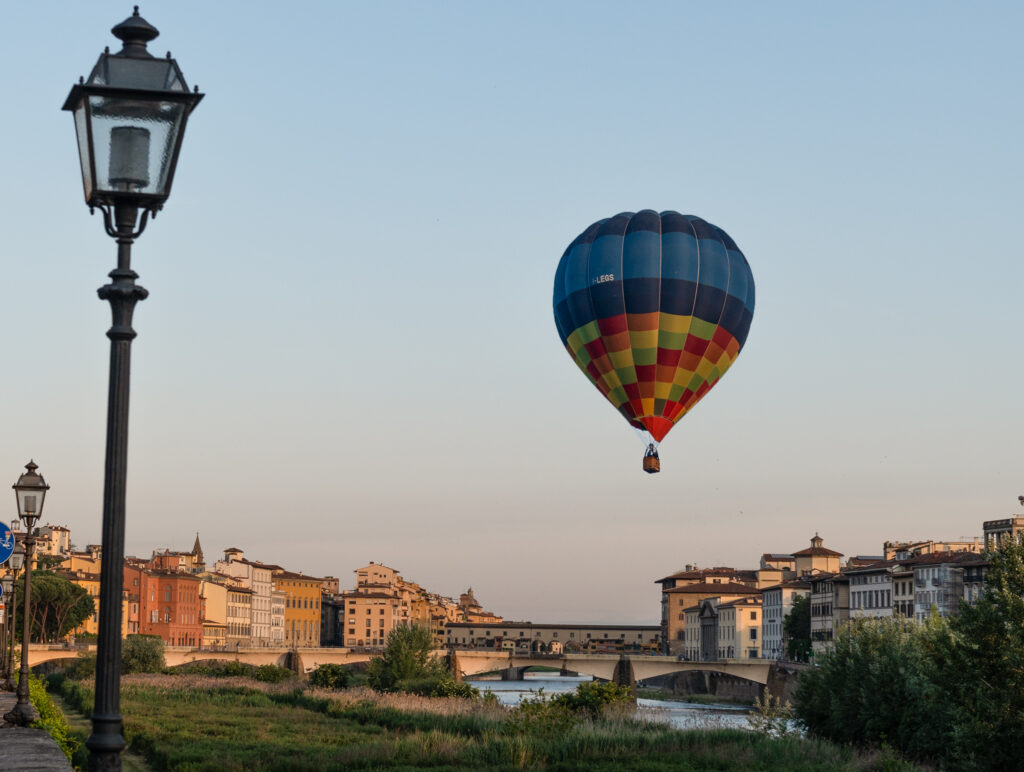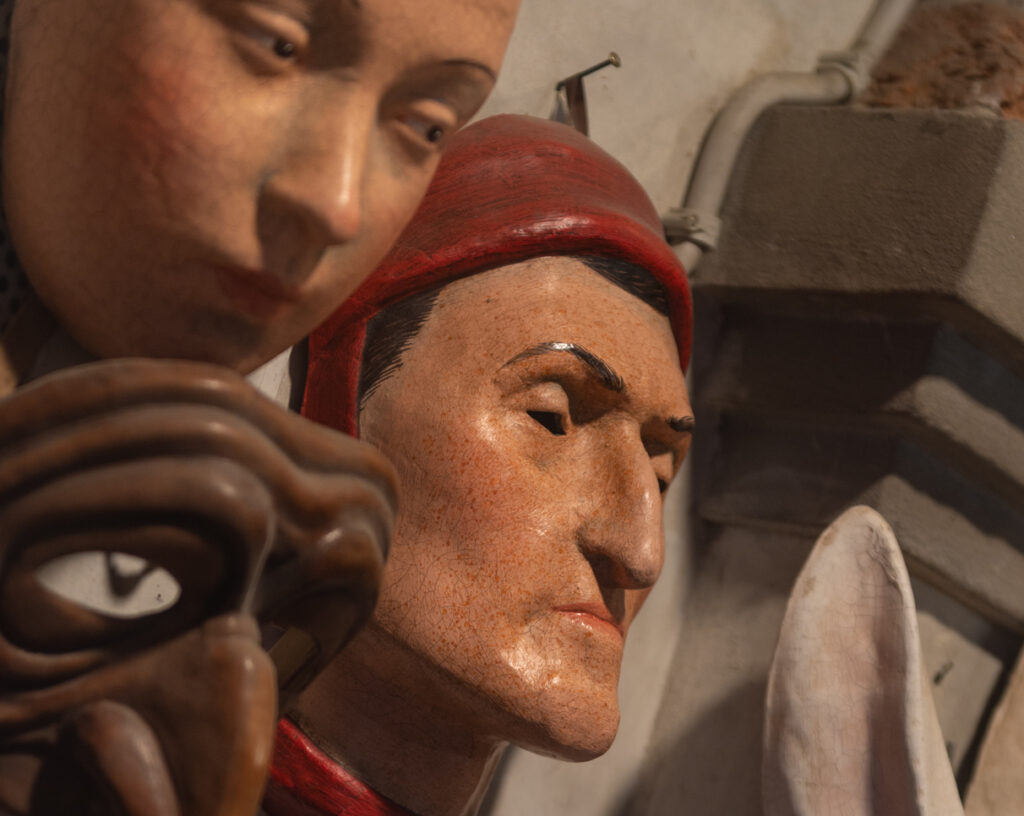
Florence, rejoice, now that you have such fame,
And over land and sea you spread your wings
The whole of hell is ringing with your name.
(Inferno XXVI)
So opens Canto 26 of the Inferno, the first part of Dante Alighieri’s celebrated Divina Commedia. In 100 cantos, all set in Terza Rima, he retails with high-flying imagination and in sordid detail, how he, with the help of the ancient Roman poet Vergil, descended to the underworld and made his way up through Purgatory to reach highest and brightest spheres of Paradise. Or in simpler words, how he went through hell and was saved.
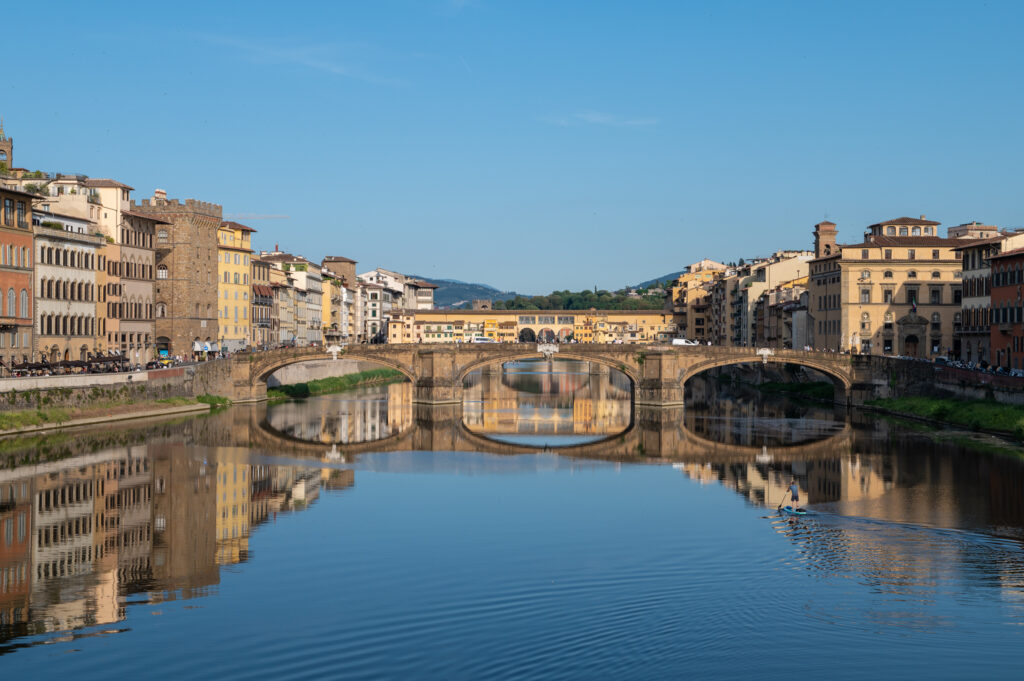
Dante had written his masterpiece in exile, in Ravenna on the Eastern coast of the peninsula. The Florentine citizen was unable to return to his native city since he had been sentenced to death by burning on the stake. As someone who believed that the individual was inseparable from their community, Dante suffered tremendously.
You shall leave every single thing behind
Which you hold dear; and this is but the first
Arrow that exile shoots, and your first wound.
You shall experience the bitterness
Of eating strangers’ bread, and feel how hard
Going up and down another’s staircase is.
(Paradiso, XVII)
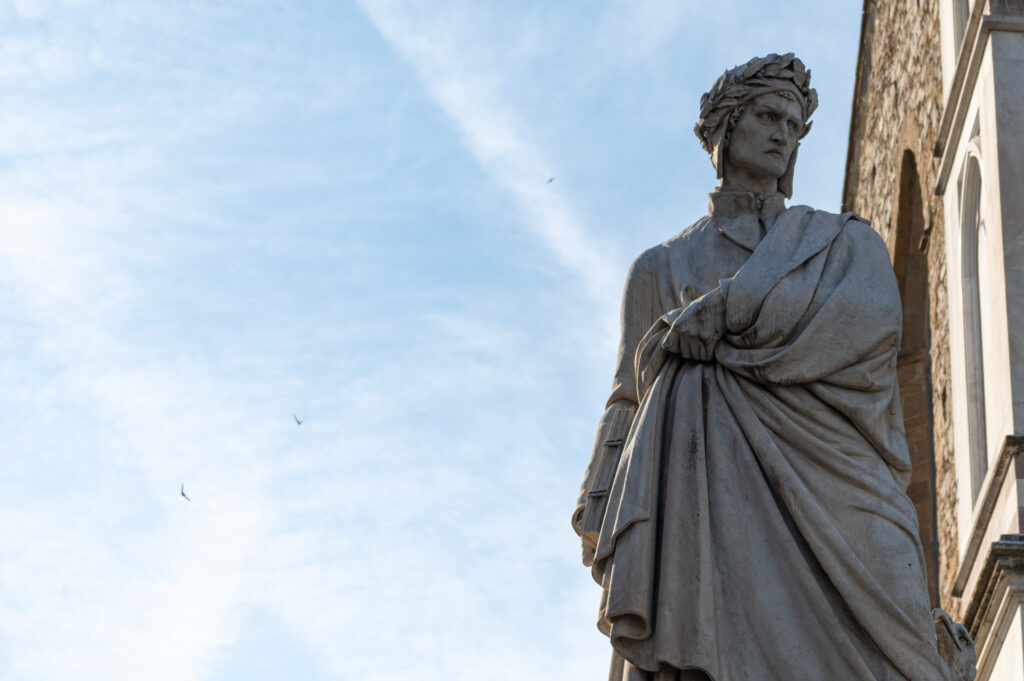
Dante died in exile, having contracted malaria. The year was 1321, and the medieval was world crippled by diseases and famines, by serfdom and injustice, by superstition and ardent Catholicism, by feudal violence and brutal warfare in the name of God. Yet, to our ears, Dante’s words sound modern. And they are of current concern, given the more than 100 million refugees worldwide, given the pandemic and climate collapse, given growing economic and social injustice and loss of democracy. Indeed, the Commedia tells a universal, timeless truth. If Dante was lamenting his homesickness, he did so for the whole of humanity. Wasn’t human experience an exile of some sort? Wasn’t exile the human condition? It was this a philosophical thought, for the first time expressed in vernacular, the language we all possess and not in haughty academic Latin, the language of the elite. Dante’s ideas were hence accessible to the illiterate, uneducated people. A novelty. And by placing human experience in the center of his thinking he opened the gates for what was to finally bring an end to the Middle Ages: the Renaissance and, ultimately, the Enlightenment.
Consider well your origin, your birth,
You were not made to live like mindless brutes
But to pursue to gain wisdom and worth.
(Inferno XXVI)
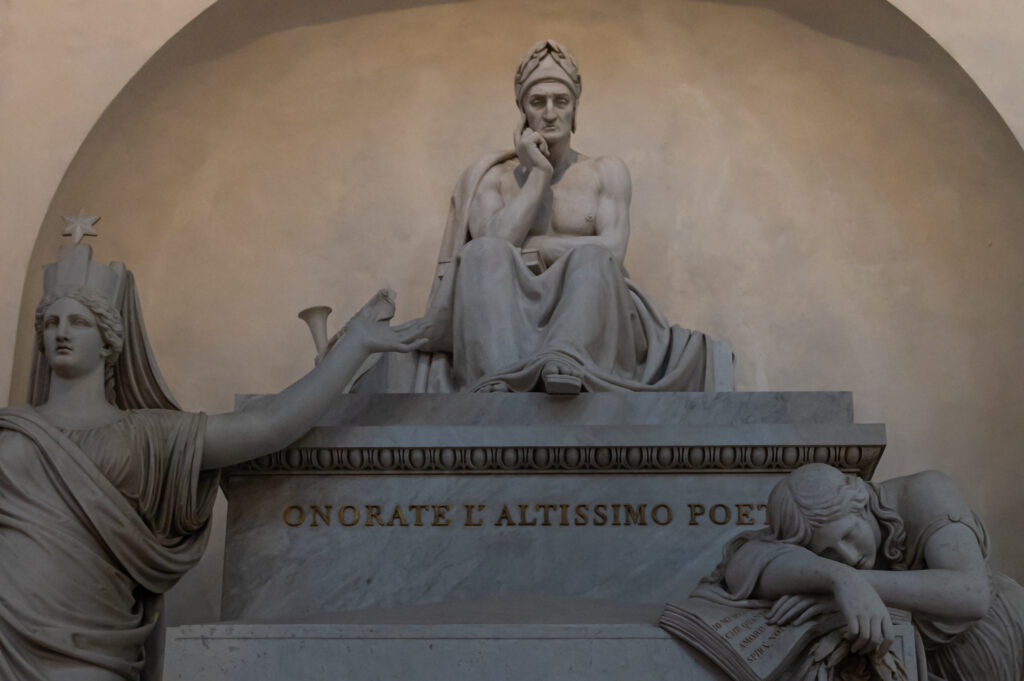
Dante Alighieri changed the world in many ways. He was a poet of Shakespearean eloquence. Some consider him a love poet in his veneration of his beloved Beatrice and the final and profound realization that God is love, found in nothing but love, requited or not. Others take him to be the first existentialist philosopher, who replaced fate and divine will by choice and responsibility. Some scholars praise Dante’s early feminism in his portrayal of Beatrice and of God as an androgynous entity. The Risorgimento, the movement propelling the unification of Italy in 1861, made Dante their patron saint, since it was him who had literally unified Italy by defining the Tuscan dialect as the one Italian language. Out of the many Italian dialects spoken all over the peninsula, Tuscan was the one that … left its scent in every city but made its home in none, belonged to every Italian city yet seemed to belong to none (De Vulgari Eloquentia). Mussolini believed to recognize in Dante the Italian Übermensch, at the same time as Jewish writer Primo Levi found solace and spiritual liberation in reciting Dante while detained at Ausschwitz concentration camp. The medieval church vilified Dante, calling the Commedia a poisonous vessel of the father of lies covered with false and fallacious beauty, but Pope Francis in his 2021 apostolic letter urged the world to read the Commedia.
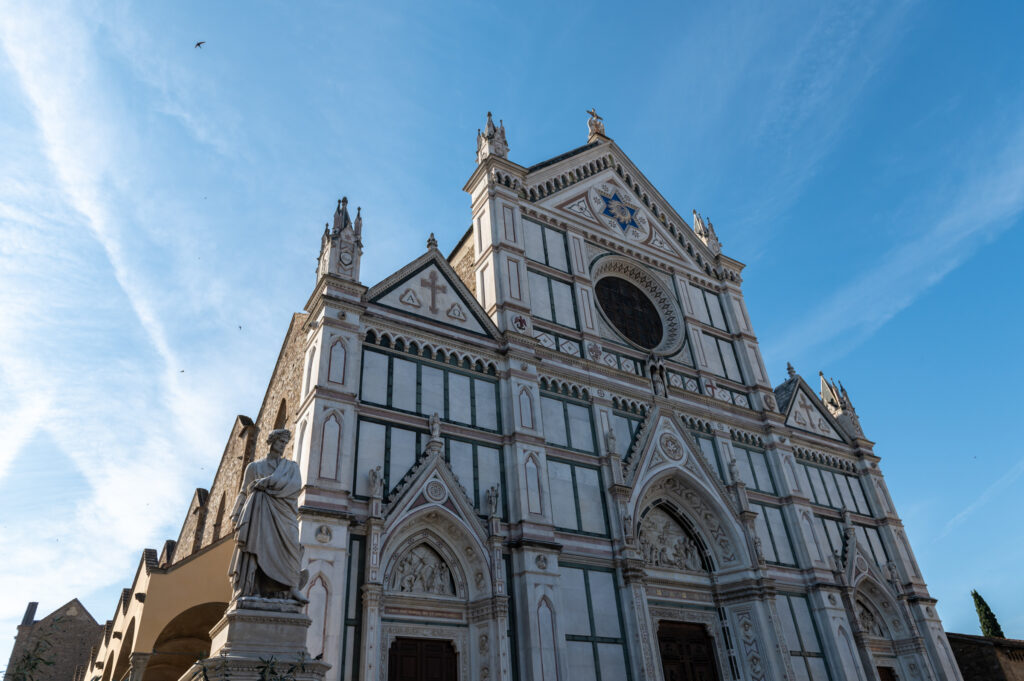
Little is known about Dante the man. Reportedly he was of medium height and of dark complexion. In contemporary descriptions a beard was sometimes mentioned, a facial feature that contradicts the austere, hollow-cheeked representation of Dante as it was repeated throughout history. Fellow writer Giovanni Villani claimed that he was “presumptuous, contemptuous and disdainful.” Boccaccio, who never met Dante and had to rely on oral testimonies, described him (in his book “In Praise of Dante”) as a good dresser, always fashionable, and melancholy and thoughtful, but proud and disdainful and prone to losing temper. Dante, it seems, didn’t make many friends in Florence. On the contrary. When setting out to write the commedia, he seemed to have many scores to settle. He peppers the Inferno with many of his adversaries. On his way through hell, Dante gets to watch many of his fellow citizens smother in hell, his fellow writers and teachers, even a handful of popes, one of which, pope Boniface VIII, hadn’t even died by the time of writing. But in the first circle of hell, Limbo, he also gets to meets his great idols, the poets Homer, Horace, Ovid, and Lucan. They greet Dante as an equal. What honour, how flattering. And so the Commedia tells us more about Dante, the man, than he probably intended, while painting a colourful picture of his time and his universe which, of course, was Florence.
Surely, Dante an ambitious man, and industrious: he was a politician, a diplomat, a soldier, a father of four and a husband, albeit not Beatrice’s. He met Beatrice Portinari only twice. Once, at church, when he was nine and she eight, and then again in 1283, when his was eighteen, at the river Arno, close by Ponte Vecchio. Beatrice greeted him then, but later denied having done so. They never met again, Beatrice died young.
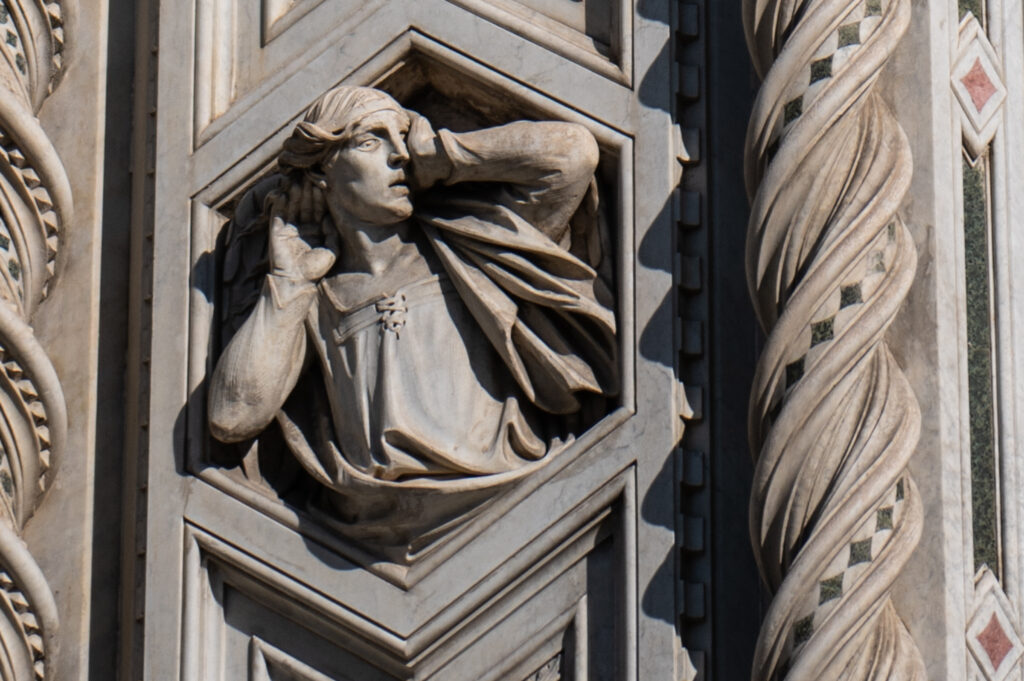
Dante chronicled his love for Beatrice in a collection of poetry called Vita Nova (the new life) as it turned from romantic love, when in a strange dream Amor fed his fervent heart to Beatrice, to her death, when his love his turned into spiritual devotion:
because the pleasure of her loveliness,
once it had left our sense of sight behind,
became great spiritual beauty then,
which through the heavens sends
the light of love, which blesses angel-kind,
and their high intellect, unperishing,
amazes, it is such a gracious thing.
Hell is a Place on Earth
In the Commedia, Beatrice appears both as herself, Beatrice Portinari, and as a symbol of spiritual love. It is Beatrice who sends the poet Vergil to help Dante, when in the opening verse, he is lost:
Halfway along our journey to life’s end
I found myself astray in a dark wood
since the right way was no where to be found.
(Inferno I)
This is of course an allegory: Dante set the beginning of the Commedia on Good Friday 1300, the year he was thirty-five. According to the medieval belief that a life lasted seventy years, he was exactly at the mid point of his life. The dark wood stands for midlife crises: depression, the hum drum of a life that lost its meaning, the anxiety of sins committed, of punishment yet to come. The dark wood alludes to the garden Getsemani, where Jesus, doubting, prayed to his father. Indeed, Dante based his Commedia to a great extent on the bible. His other literary inspirations were Vergil’s Aeneid and St. Augustine’s confessions. Like Aeneas he is lost and searching, like St. Augustine Dante is looking for salvation – but not yet. First, Vergil must take him on a journey to show him the true nature of existence. In the realistic depictions of suffering and eventual exhilaration Dante is literally brought to his senses.
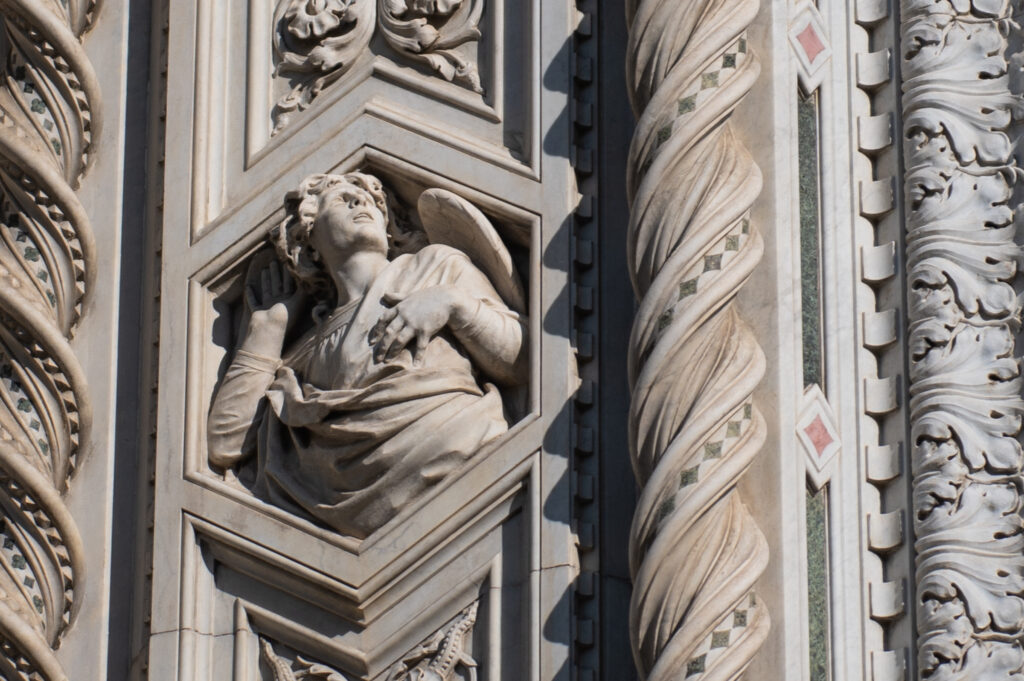
Accordingly, the Commedia is an allegory in physically realistic terms. Inferno, Purgatory and Paradise are peopled with characters of mythology and history who in their own voices relate to Dante (and the reader) how they got into their unfortunate situation. Their deeds on Earth, it turns out, are not forgotten, but magnified in the afterlife, and they pay dearly for them. Dante faints frequently at the sight of hacked-off limbs, of bodies ripped (open) from chin right down to where we fart. He sees two (bodies), frozen within one hole, where one head wore the other like a hood. Some are walking backwards with their heads turned back on their bodies; there is a headless trunk moving around, holding up its own severed head. There are sinners consumed by flames, there are sinners immobilized in ice up to their neck,
Their eyes, which had been only moist within,
Gushed over at the lids, until the cold
Congealed those tears that locked the lids again.
(Inferno XXXII)
And so it goes on for thirty-four gruesome cantos. Infernal punishment works along the lines of the so-called contrapasso – the (very creative) reversal of the committed sin. For decades to come Dante’s horrific imaginations will inspire painters in their portrayal of the last judgement. But Dante’s visions didn’t come from nowhere. They were very much grounded in Florentine reality.
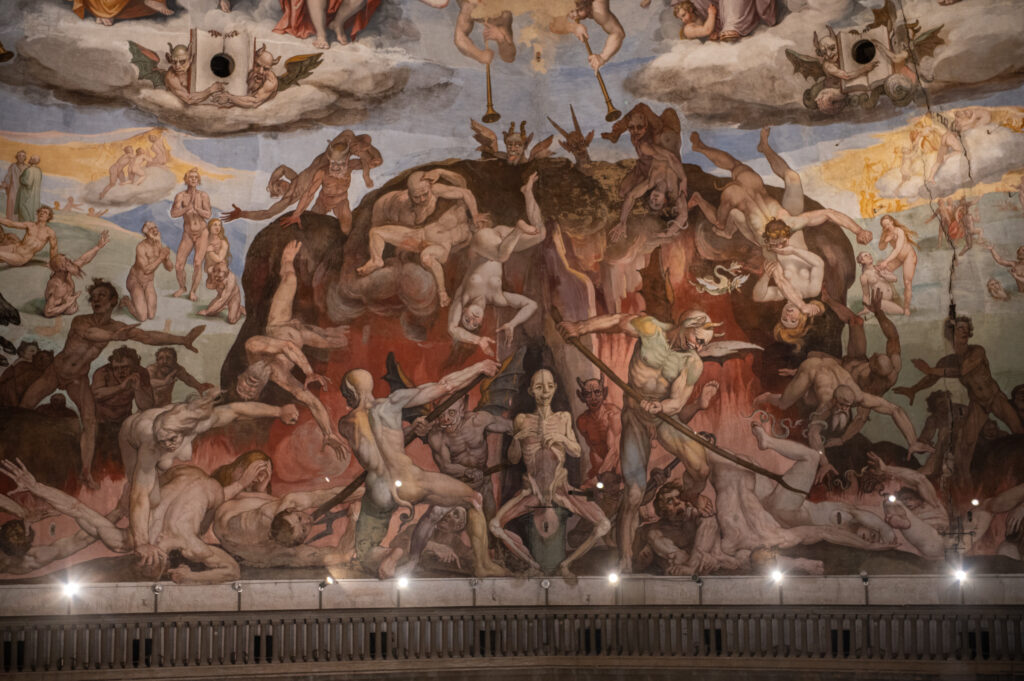
A child of his time.
In the year of Dante’s birth, 1265, Florence was like the rest of Tuscany, in the throes of a bloody feud between the supporters of the papacy (the Guelfs) and the Holy Roman Emporer Frederique II (the Ghibellines). The Guelfs was the party of the nouveaux riches, the bankers and traders, who wished for a looser, less rigidly controlled society. The Ghibellines were more conservative and feared the Pope and the territorial expansion of the neighboring papal states.
Even though the city state was a republic since 1115, these battles were not fought in the Signoria, the parliament, but in ferocious street fights. Tongues were cut out and hands amputated. Enemies were thrown in dungeons and left to starve, disemboweled, dragged through the streets, burned at the stake. They were imprisoned and tortured, exiled and their property was confiscated, their houses razed to the ground. Rich families, who had their own private armies and notorious mercenaries on their payrolls, fortified their residences with thick walls and towers and little windows to guard themselves from their neighbors. By 1200, there were hundred towers in the city. Shakespearan dramas like that of the Montagues and Capulets were real and frequent.
In the Commedia, Dante tells, how in 1215 such a tragic love story lay at the beginning of the murderous feud. The unlucky lover was slain at the Ponte Vecchio at the foot of a mutilated statue lay at the beginning of the murderous feuds. Today, these words are still engraved in a stone at Ponte Vecchio:
But Florence was a destined sacrifice
To that disfigured stone which guards the bridge
A victim in her final days of peace
(Paradiso XVI)
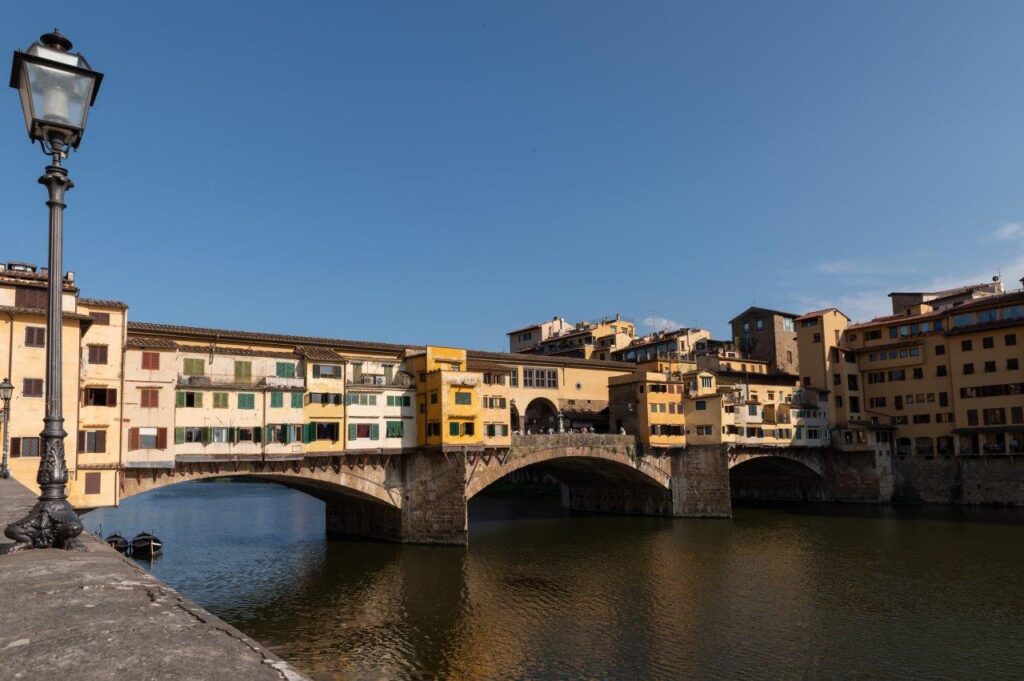
Ghibellines were eventually killed or exiled in the city, but the surrounding lands remained a Ghibelline stronghold until the decisive battle battle of Campaldino near the city of Arezzo in 1289. Dante, who was twenty-four at the time, participated as a knight in this rather fierce clash, which involved 20,000 combatants and lasted only a day. He still talks of the battle in the Commedia:
I have seen troops of horsemen breaking camp,
opening the attack, or passing in review,
I have even seen them fleeing for their lives;
(Inferno XXII)
Immediately after the Ghibellines had been exiled or killed, the winning Guelphs fell in two rival blocks – I neri e I bianchi/the black and the white – and they continued their feuds with unrestrained fervor and brutality.
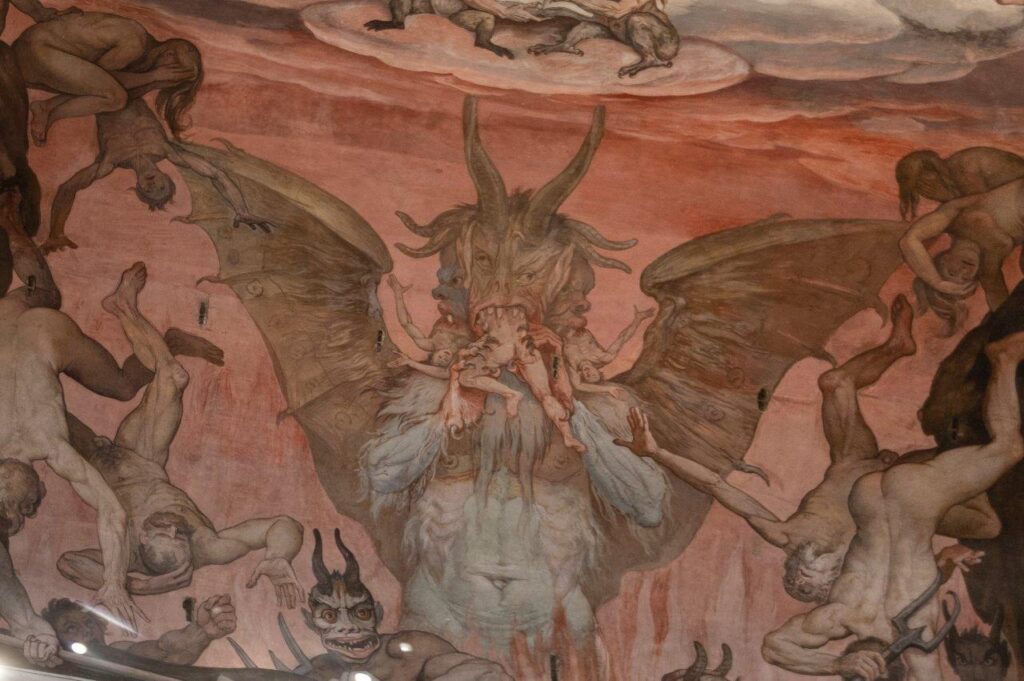
The son of a money lender (the earliest form of banker) of moderate wealth, Dante sided with the Guelphs. But, believing that the Pope’s powers should be limited, he sided with the Bianchi. Unfortunately for Dante, it was the Neri who gained power just when he served his two month term at the Signoria, the parliament. He was heavily fined for corruption and exiled, to be burnt alive at the stake should he ever set foot to Florence again. He spent the rest of his life in misery, wandering from city to city.
You go through me to everlasting pain
Abandon hope entirely, you who enter
These words are written on the gates of the Inferno. But when Dante, the protagonist of the Commedia, descends to hell, he doesn’t walk, but he falls. Dante the poet uses the word rovinare (Inferno I)which means to collapse or fall to ruin. Dante, the man, was at that point faced with the question of how to continue a life in ruins. By writing his Divina Commedia, Dante found a way to overcome the sorrow, and the sins of the past: those afflicted, those self-afflicted and those suffered at the hands of others.
Dante was lost only to find himself. For this process, he invented a new word. Trasumanare (trans – su – manare) as to transcend oneself, one’s own anxious self. Only in the moment of hopelessness, he claims, one’s proper humanity is revealed, in the heroism that stems from humiliation, in the resolve that grows from resignation, in the courage to let go and define new reasons for being. Only through self- confrontation do we get to know ourselves, to forgive and love ourselves – and others.
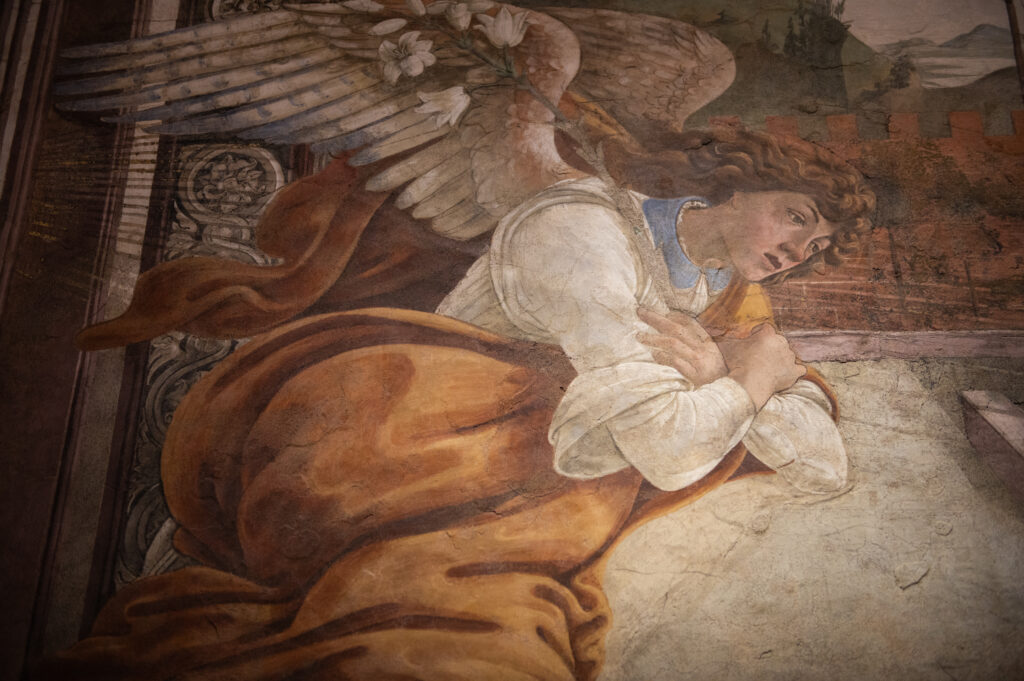
Of course, this stands in stark contrast to the medieval idea of divine will and stationary order. For Dante, men and women acted upon choice and free will and were to be held responsible. Accordingly, every sinner had acted upon choice they had therefore chosen their own punishment – the contrapasso, unless of course, self-knowledge trickles in, the moment of true repentance.
A place of suffering and torture, the Dante’s Purgatory was not unlike hell, yet with one decisive difference: there was hope, and hope turned suffering into learning, pain into purging. Eventually everyone who truly repented would be forgiven and welcomed into Paradise. For Florence, this notion had major consequences.
The city’s immeasurable wealth was based on the banking system, but usury was regarded a sin. In order to repent each Florin made, the shrewd bankers of Florence hence invested their money in sacral art –commissioning churches and chapels and baptisteries, they had themselves depicted as saints and martyrs. They flooded Florence with art and changed city’s face for good.
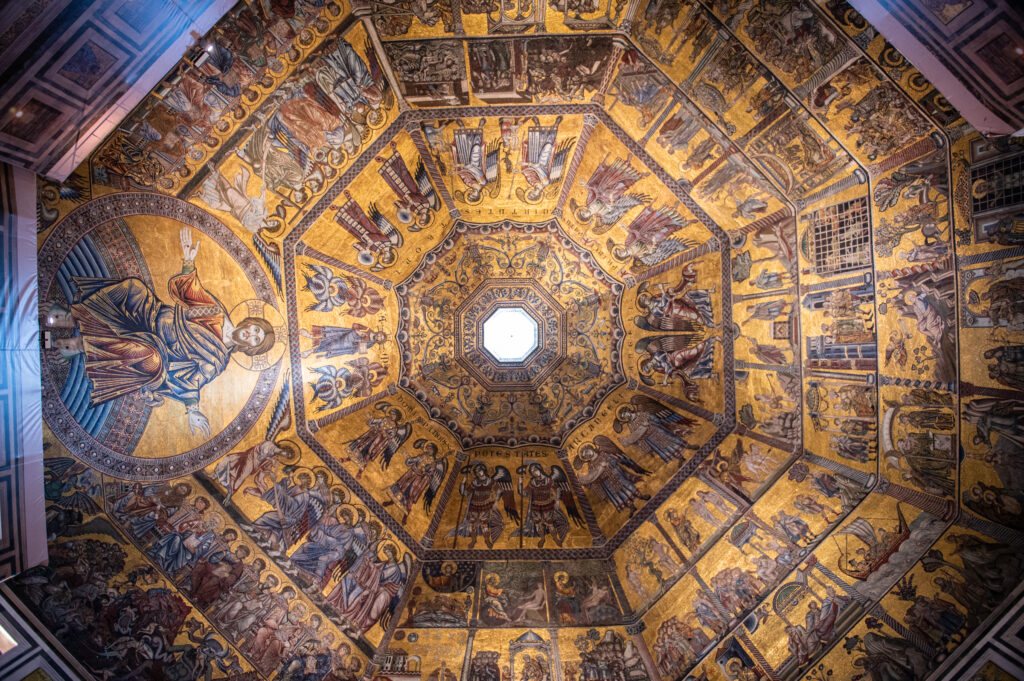
But was this good enough? Surely not. For Dante the outsourcing of repentance didn’t function, neither to artists nor to Jesus. It didn’t even suffice to live a life devoid of sin to go straight to heaven. In fact, the refusal to decide for or against the Good was the worst of all sins and the antechamber of hell was reserved for those who failed to make choice, take risk out of conviction, failed take responsibility working towards the common Good. Rejected by both Paradise and Hell, they are:
Sorry creatures: the lives they lived were such
They earned no infamy, and earned no praise.
Now they mingled with that wicked sort
Of angels who were neither with the rebels
Nor true to God, but simply stood apart
(Paradiso III).
Dante was saved by Vergil who was sent by Beatrice, by rationality inspired by love: God. Once he reaches the highest spheres of Paradise, Dante gets to meet Beatrice and in her eyes he sees the one light that brings unique human happiness.
But now all my will and my desires
were turned like a wheel in perfect motion,
by the love that moves the sun and all the stars.
(Paradiso XXXIII)
